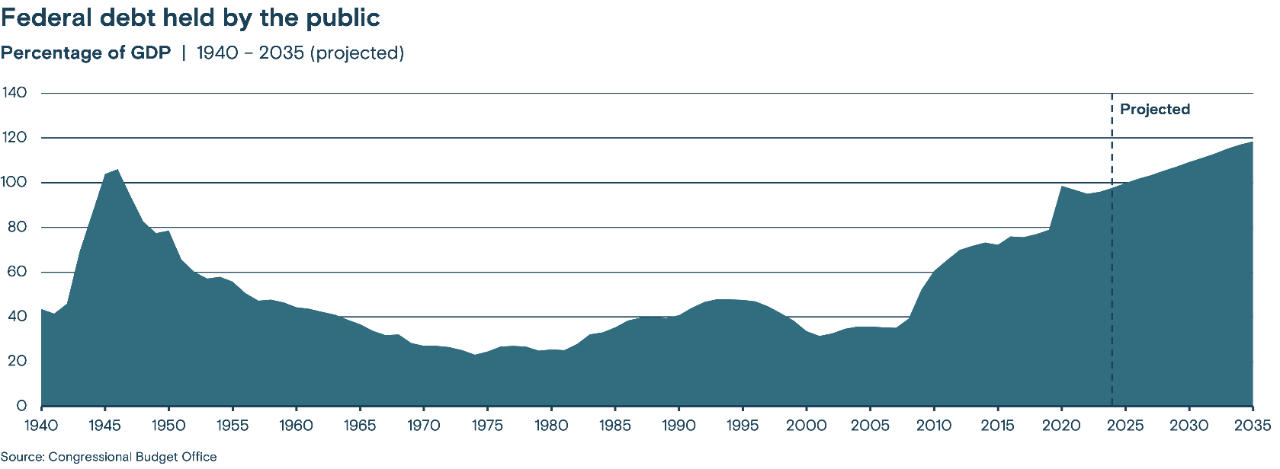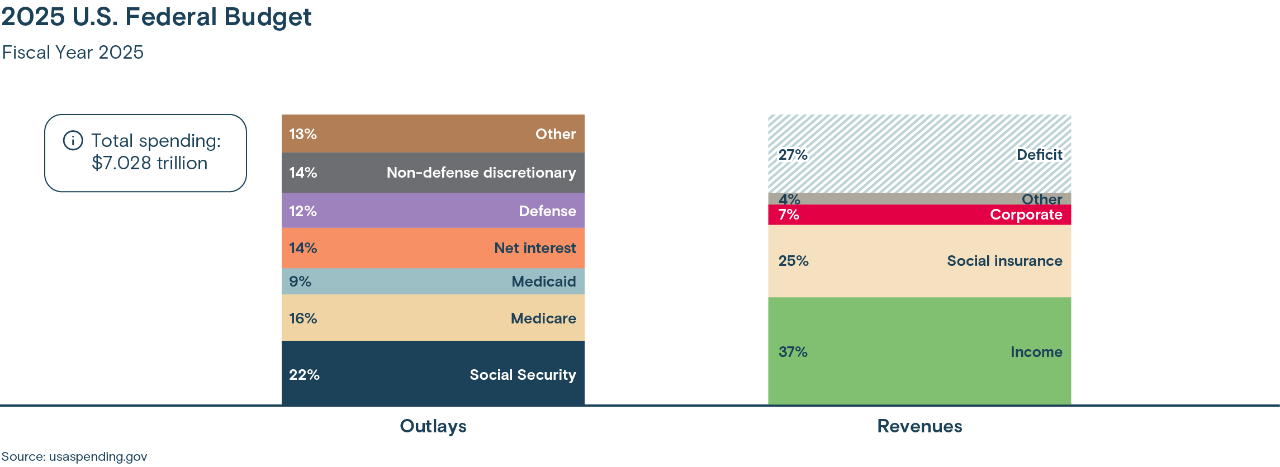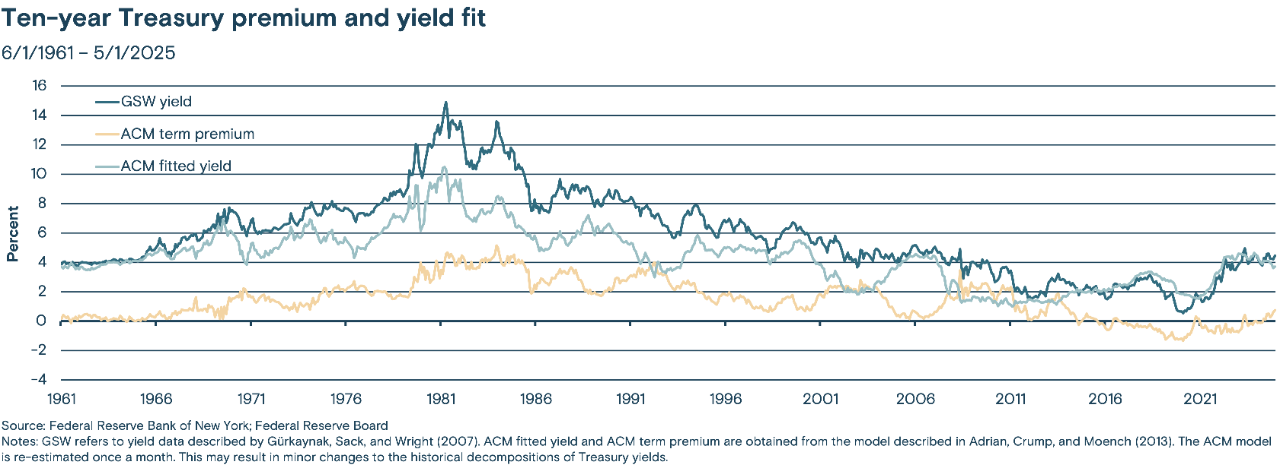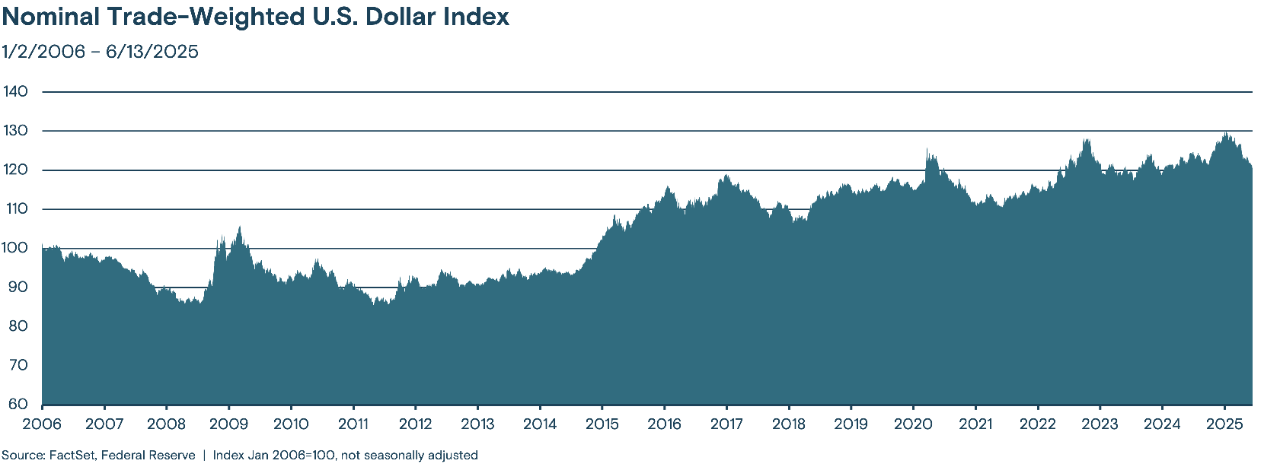Could the bond market decide?
Given the time it could take for economic growth to rebound sufficiently to help reduce the deficit, and the political and logistic challenges of the alternative approaches to reducing government debt, the most likely outcome should sentiment continue to wane, is that the bond market forces the government to take action. Historically, burgeoning debt levels can persist for years and then suddenly hit a tipping point and matter a lot, sparking a surge in interest rates and sometimes a crisis.
The United Kingdom is a recent example that comes to mind. In 2022, when the country’s debt load was already stretched, Prime Minister Liz Truss proposed a budget with unfunded tax cuts. Lacking the confidence that such a plan would succeed in creating sufficient economic growth to eventually fund the tax cuts, the bond market revolted. Aggressive selling of gilts (the common name for U.K. government bonds and shorthand for “gilt-edged security” as the British government has never missed an interest or principal payment on its debt) pushed interest rates rapidly higher. As higher rates put further pressure on the government’s borrowing costs, the fiscal outlook further deteriorated, prompting more selling. Ultimately the Bank of England was forced to intervene, buying gilts from the market, and the prime minister resigned.
In our view, a similar scenario could unfold in the U.S. if the fiscal outlook continues to deteriorate. Domestic and foreign bond investors could accrue sufficient conviction in their concerns to begin a cycle of selling that requires an immediate and aggressive governmental response. And like in the U.K., once confidence has collapsed, it takes substantial and meaningful change to earn that confidence back.
Such a scenario is not our base case, or a view that is influencing our current strategic asset allocations. But we are mindful that the recent increases in risk premiums and CDS spreads, together with a weaker U.S. dollar, are signals that the bond markets are becoming increasingly concerned about the sustainability of the U.S. government’s approach to debt.
In the meantime, we expect Treasury bonds will remain responsive to changes in the outlook for the economy and the path of inflation. The budget, the impact of tariffs on growth and inflation as well as geopolitics will remain the most important drivers of U.S. government bond yields in the months ahead. And we have great faith in the U.S. economy’s ability to adapt to challenges and shocks.







![Value investing [PODCAST]](/content/dam/thrivent/fp/fp-insights/advisors-market360-podcast/advisors-market360-podcast-16x9-branding-insights-card.jpg/_jcr_content/renditions/cq5dam.web.1280.1280.jpeg)
